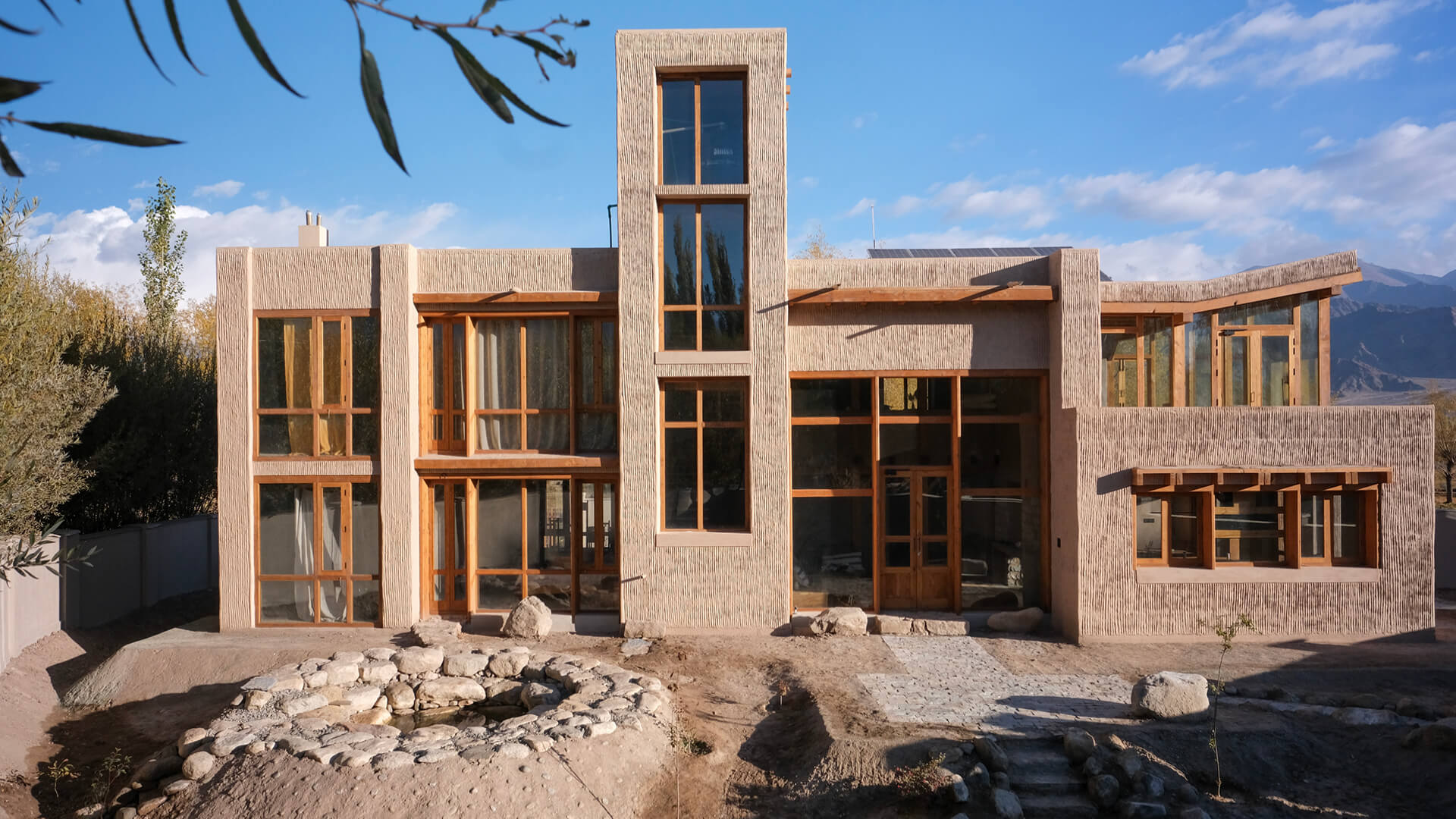In Ladakh, India’s highest plateau, residential architecture is shaped by extreme cold, intense solar radiation and arid landscape. Structures rely on locally sourced sun-dried mud bricks, rammed earth and timber, with hand-plastered walls and meticulously layered timber and compacted earth roofs engineered to withstand heavy snowfall. The spatial organization—livestock housed on the ground floor with living spaces above—serves both environmental and practical purposes. The compact residential interiors and small, deeply recessed windows are essential in reducing heat loss and minimizing exposure to the region’s dry, biting winds.
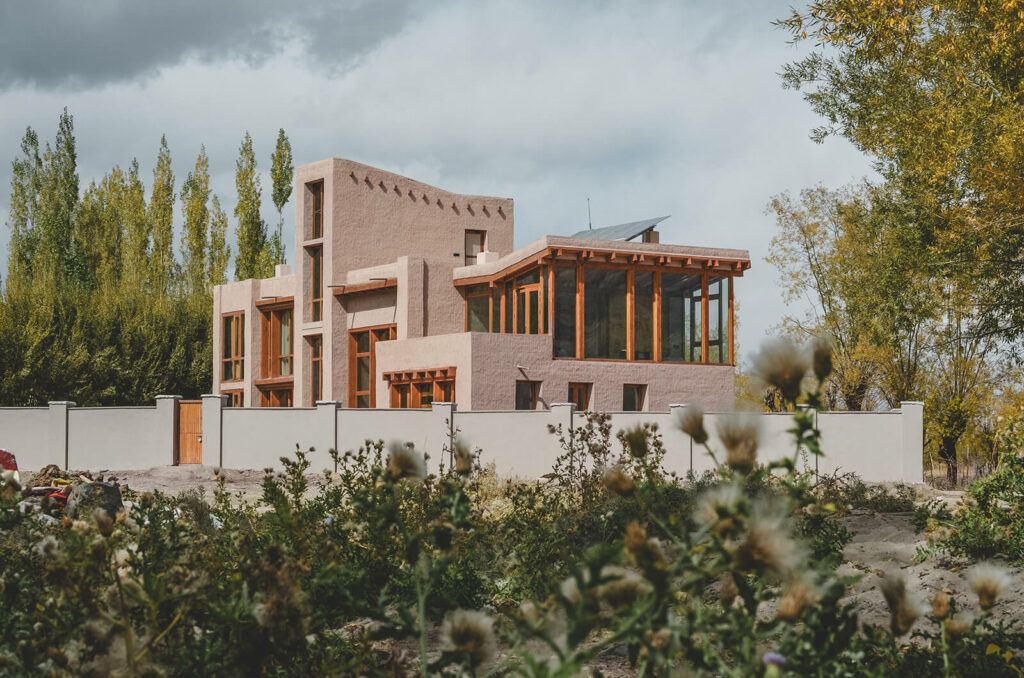 Gulzar’s House sits along the banks of the Indus River.
Gulzar’s House sits along the banks of the Indus River.
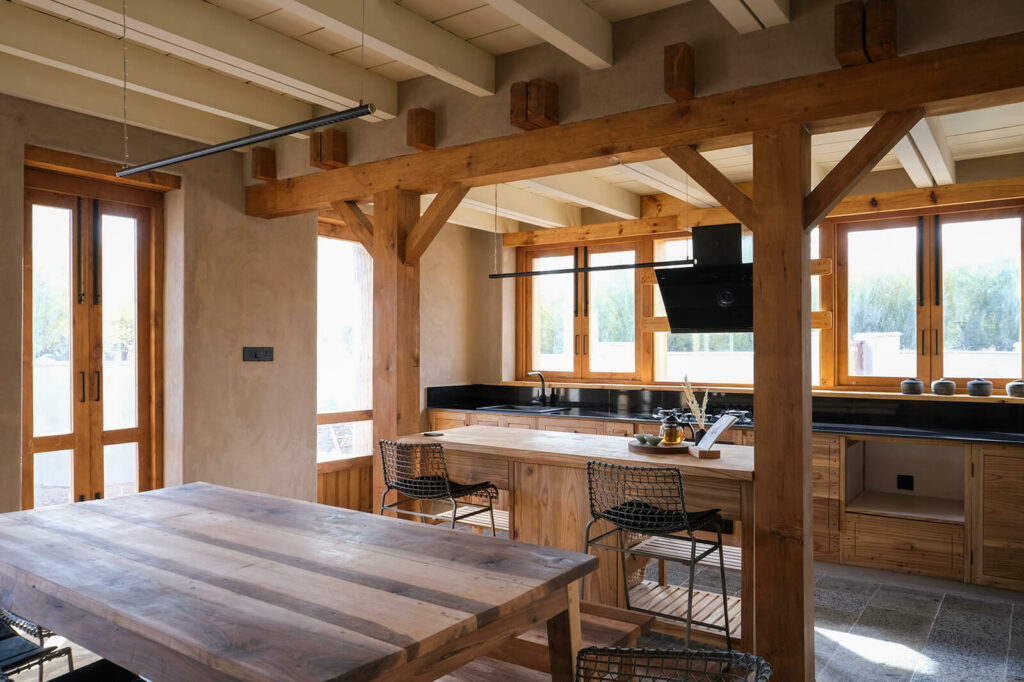 Anchored around a large living room on the ground floor, there are two bedrooms, a study and a common kitchen and dining space distributed across its two floors. The plan prioritizes large, interconnected interior spaces over the compact and clustered arrangements otherwise characteristic of vernacular architecture in the region.
Anchored around a large living room on the ground floor, there are two bedrooms, a study and a common kitchen and dining space distributed across its two floors. The plan prioritizes large, interconnected interior spaces over the compact and clustered arrangements otherwise characteristic of vernacular architecture in the region.
 Gulzar’s House features a timber architecture assembly with expansive glazing offering uninterrupted views of the valley which incorporates passive solar heating strategies.
Gulzar’s House features a timber architecture assembly with expansive glazing offering uninterrupted views of the valley which incorporates passive solar heating strategies.
 The house employs a double-wall adobe system integrating repurposed army mattresses to ensure insulation.
The house employs a double-wall adobe system integrating repurposed army mattresses to ensure insulation.
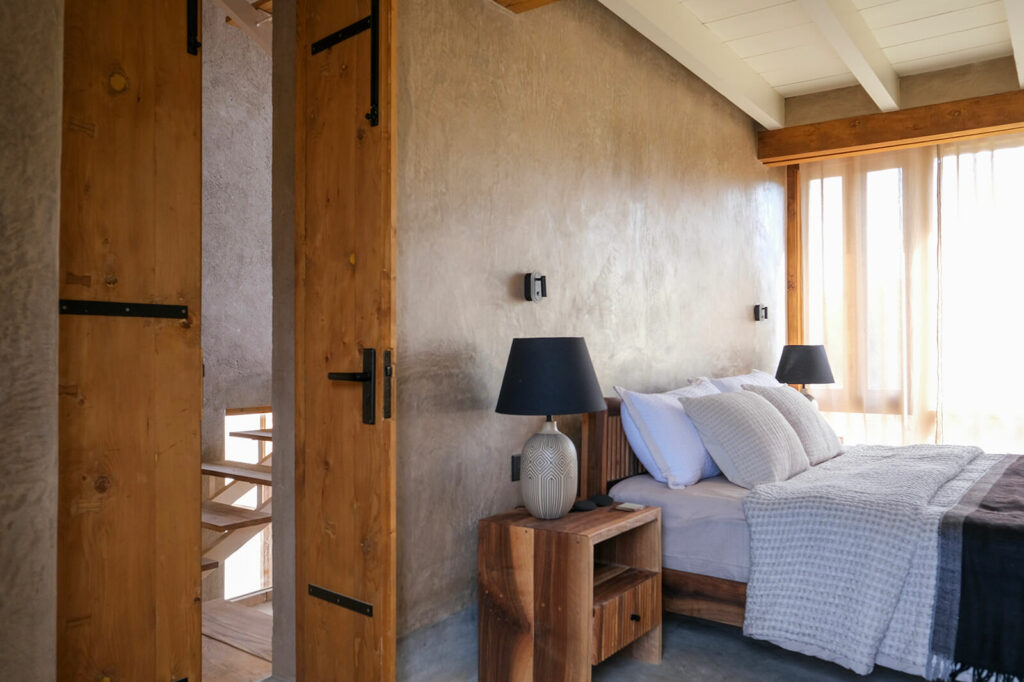
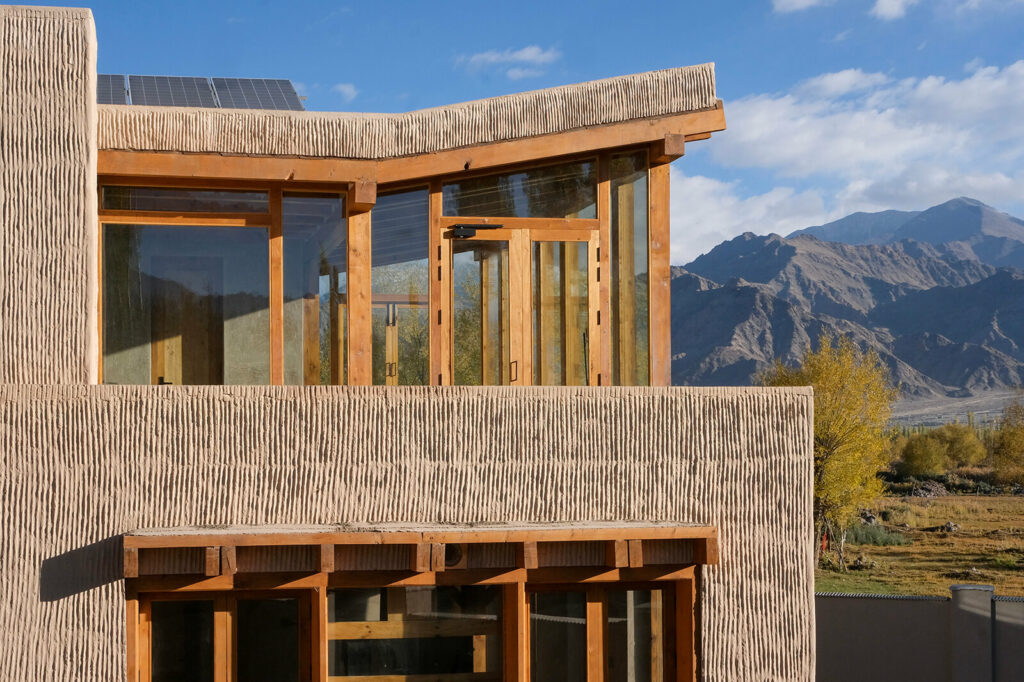 Internally, the walls are finished with smooth lime plaster, while externally, a pinstriped pattern in earth plaster renders an image fairly atypical of Ladakhi traditional structures.
Internally, the walls are finished with smooth lime plaster, while externally, a pinstriped pattern in earth plaster renders an image fairly atypical of Ladakhi traditional structures.
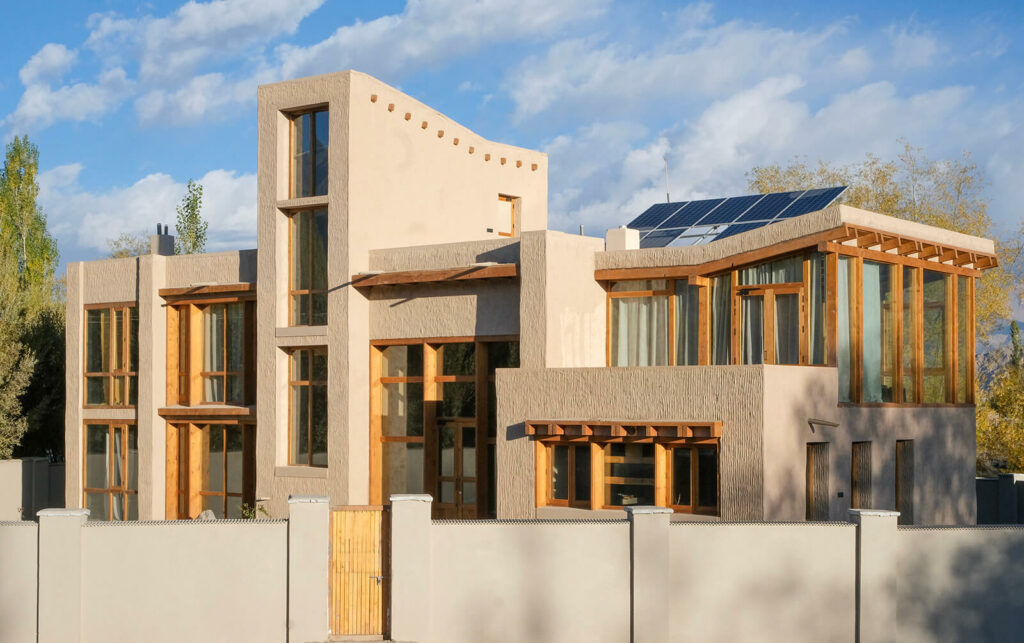 Built on a wide and robust dry stone-masonry foundation, the periphery of the building is surrounded by earth berms on all sides to minimize heat loss from the base.
Built on a wide and robust dry stone-masonry foundation, the periphery of the building is surrounded by earth berms on all sides to minimize heat loss from the base.
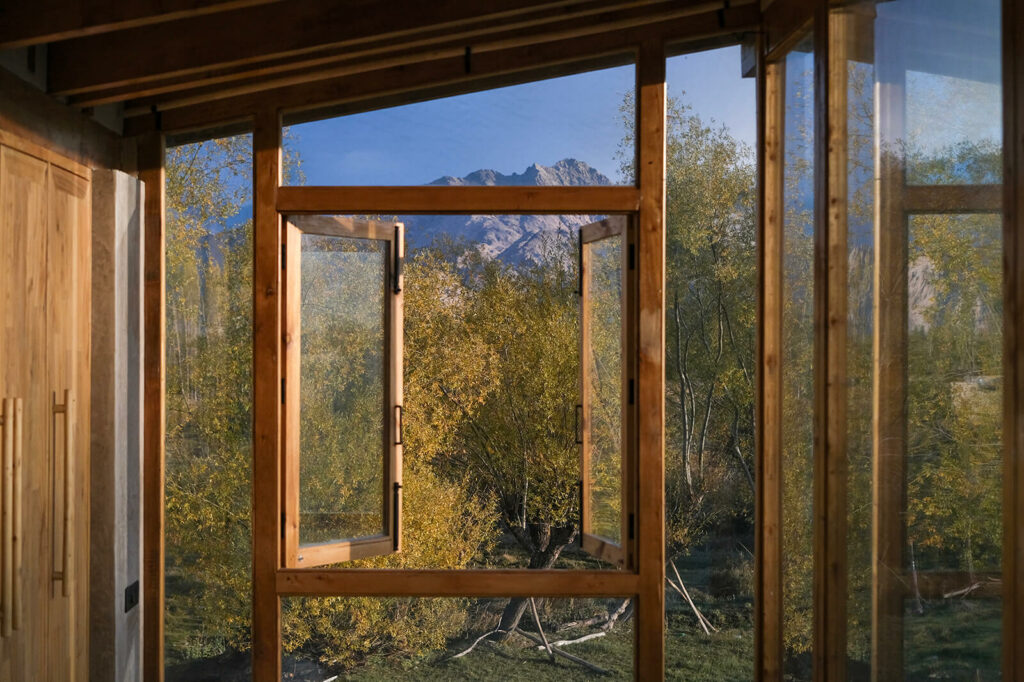 Gulzar’s house flips the loose interpretation of the ubiquitous ‘modern vernacular’ from one that mostly employs a vernacular aesthetic with contemporary processes to one that retains the craftsmanship and practices of the vernacular with a reinterpreted program that evolves from a new style of living and an aesthetic without any distinct reference to time or style.
Gulzar’s house flips the loose interpretation of the ubiquitous ‘modern vernacular’ from one that mostly employs a vernacular aesthetic with contemporary processes to one that retains the craftsmanship and practices of the vernacular with a reinterpreted program that evolves from a new style of living and an aesthetic without any distinct reference to time or style.
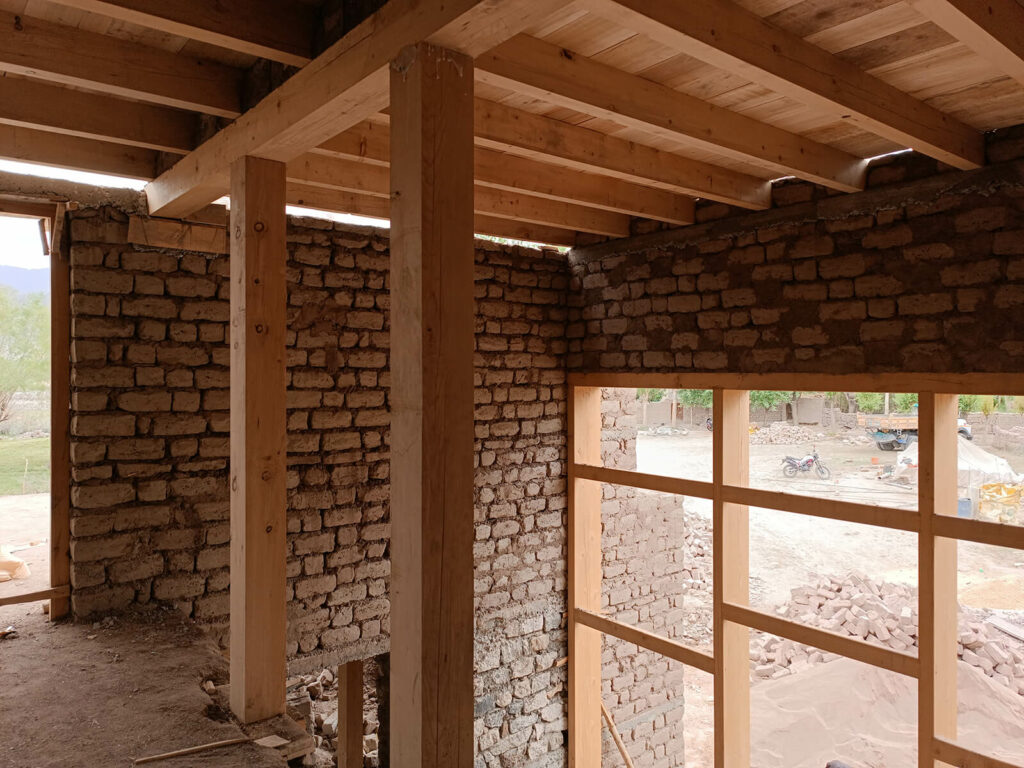 You can read the original article at www.stirworld.com
You can read the original article at www.stirworld.com

